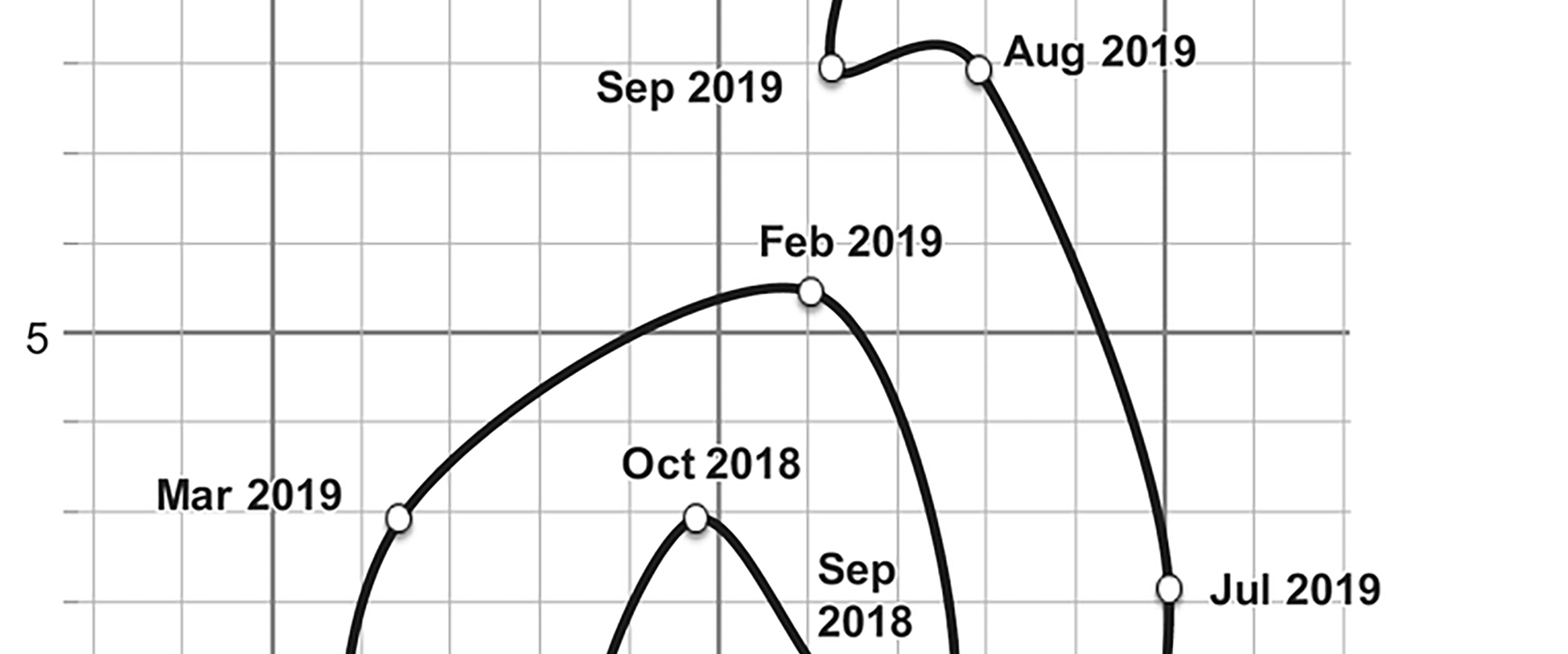The Labour party is now more popular than it was when both of the last two general elections were held

This has never happened before. No UK political party has seen such a large and such a rapid rise in support as Labour saw in May 2017. It is unprecedented and it was not predictable.
It was unpredictable, because prediction depends on precedent. The rise was, of course, from a very low base, but that does not make the rise any less surprising. Labour have been very low in the polls before, but they have never risen so fast nor so far up so quickly before in popular support.

The graph above (and that below) are based on data from the 2,240 polls conducted between May 13th 2010 and June 1st 2017. The monthly average support for the Labour party is shown on the Y axis and the rate of change in that support is shown on the X axis. Polls from before 2010 were taken less frequently (and are not graphed here), but none (when averaged over a month of polls) ever showed a rise as fast as the rise shown above when all the poll results for May 2017 are averaged into a single result, as if they were one very large poll.
Each point in the graph shows average support for Labour in all the polls taken that month. What the graph shows is that from April 2016 to April 2017 support for Labour slowly fell and fell. All that was more than reversed in the rise in May 2017, which continues into June. The final data point on the graph above is based on just the first poll of June, one in which Labour secured 36% support. The party has done better in other polls held after June 1st, but we will have to wait until the end of June to know what its true support was overall that month. And we will have to wait until the end of tomorrow to know how the recent dramatic swings in the polls relate to actual votes. Even after such a rise the polls can underestimate as well as overestimate Labour support. What matters for the general election outcome is the momentum behind the changes we see and if that momentum is continuing this month. If the polls are reflecting a great change in sentiment and a great rise in Labour support that is still continuing, then they will be underestimating the actual outcome in the election held tomorrow.
Two years ago in May 2015 some 33% of voters said they would support the Labour Party if there were an election then. In fact only 29% did support Labour when there was an election in that month. In May 2015 the polls overestimated support for the Labour party by 4%. A month later, in June 2015, the Labour Party’s support had fallen to 29%, bringing the average of the opinion polls down to the same proportion that had actually voted Labour in the general election a few weeks earlier. It was as if people were actually telling pollsters how they would have voted had a general election been held four weeks earlier. The same thing happened five years before in May 2010. The graph below shows how Labour became popular between elections in the recent past, not just before an election, as is happening this time.
The 2010 and 2015 general elections suggested that polls tend to lag behind the actual result. People might be asked what they would do in the future, what they would to tomorrow, but they tend to reply with what they know about – about how they are feeling right now and how they were feeling a short time ago. Nobody can know with complete certainty what they might do tomorrow, how they might feel tomorrow, let alone what everyone else will choose to do. In May 2010 and May 2015 support for the Labour party was falling in the month of that general election, but that could only be seen in hindsight.
Only one thing is certain. What has already happened is unprecedented in British polling history. Before May 2017 monthly averaged support for Labour never rose by as much as 2% in one month. However, most recently the rise did not just break that seemingly impenetrable barrier, it exceeded it three-fold. What was thought impossible becomes possible. What happens next cannot be foretold.

These graphs were published by Danny Dorling at 10am on June 7th 2017. The day before the (first) general election of 2017 was held. They do not include any information from polls published after June 1st 2017, which were, in general even more favourable to the Labour Party. As of today the Labour party is more popular than it was in the two months in which both of the last two general elections were held.